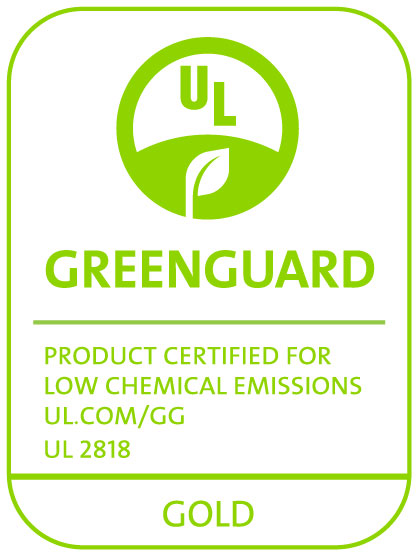Closed cell elastomeric insulation can be more costly than other forms of well-known mechanical insulation types such as fiberglass. With this information, it makes sense to ask why anyone should choose elastomeric insulation over other available insulation types. The answers can be broken down into a few key categories, all geared towards protecting the usability and longevity of your insulation projects.
Moisture protection
All insulation types run some risk of moisture damage, but closed cell elastomeric insulation can prevent equipment damage—both physical and moisture-based—better than others. Elastomeric insulation has a water vapor permeability of wvp 0.03 and a closed-cell structure that makes damage less likely. Its natural ability to repel moisture because of its closed-cell structure means reduced odds of moisture damage such as corrosion under insulation (CUI). One particular closed cell elastomeric insulation is able to reach the wvp of ≤ 0.01 perms-in that’s required in order to be considered officially water vapor retarder.
Closed cell elastomeric’s moisture-repelling abilities are significant enough that under ideal circumstances, additional vapor protection is not needed for this particular insulation type. However, this extra protection is a good idea—and may be necessary—in non-ideal circumstances, including cryogenic applications, and in extreme environments. Closed cell elastomeric insulation is also compatible with heat trace lines, for those interested in this method of preventing frozen pipes.
Mold resistance
Limiting moisture damage goes a long way towards stopping mold growth, and closed-cell insulation’s closed-cell structure can help. Insulation structures like fiberglass can unintentionally promote mold growth by wicking condensation. Once this condensation has been absorbed, it increases the spread of moisture inside the material itself, giving mold a foothold. Fibrous materials, or any insulation form that contains open-air pockets of any size, are also much more likely to trap dust and dirt. Although they may seem like unlikely food sources, even dust and dirt can provide enough nutrients for mold to grow.
These reasons are why an average sample of fibrous insulation has hundreds, and sometimes thousands, of times more microbes than closed cell elastomeric does. Closed-cell insulation does not wick condensation, and its closed-cell structure means there is no room for dust or dirt to collect.
Closed cell elastomeric also offers a smooth exterior skin that is easy to wipe clean, which is another step towards dirt- and dust-free insulation. Insulation types with vulnerable exteriors are at a higher risk for external damage that can reveal the insulation itself, but closed cell elastomeric is hardy enough to repel most physical damage. Preventing nicks and cracks on the outer layer will keep the insulation inside safe from moisture and mold. While one closed cell elastomeric manufacturer’s rubber is naturally microbial resistant, others add biocides during the manufacturing process to provide anti-microbial protection.
Closed cell elastomeric is a superior insulation type in terms of condensation control, which is another proven method of preventing mold growth. Ninety-eight percent of moisture that condenses inside a typical building cavity comes in because of an air leakage mechanism. Using a closed-cell insulation type will cut back on the instances of air leakage and the resulting condensation that will soon give way to mold. Making an effort to prevent mold can go a long way towards reducing instances of asthma, allergies, and similar medical conditions while providing healthy indoor air quality (IAQ) for building occupants.
Flame/smoke compliance
Currently, not all insulation styles meet a flame/smoke index of ≤ 25/50, while closed cell elastomeric insulation does up to 2” thick. This flame-retardant benefit can be a significant advantage in your project, and may also be an essential part of meeting building code requirements. Not all applications require this flame/smoke index rating, but those that do will benefit from choosing elastomeric. When it comes to ≤ 25/50 flame/smoke index, closed cell is comparable to fiberglass, phenolic, cellular glass, and polyethylene (PE) insulation types.
Ease of installation
Closed cell elastomeric insulation does not require any specialized tools for installation, and manufacturers offer their own specialty adhesives and the insulation itself can be fabricated in advance or on-site. It can be painted but is also available in white to match a wide range of settings and aesthetics. It’s also possible to use a self-seal double-closure system for an even faster and less problematic installation process. Closed cell elastomeric insulation is a generally easy-to-install product, which can lead to time and money saved.
Closed cell elastomeric insulation offers a wide range of benefits, particularly in terms of moisture protection and mold prevention. In many instances, choosing closed cell elastomeric insulation will provide a favorable life cycle cost for building owners and a mold-free interior that’s healthier for building occupants.
If you’re ready to look at product options, Aeroflex offers a variety of closed cell elastomeric insulation products.
Sources:
https://insulation.org/io/articles/proper-use-and-application-of-flexible-closed-cell-insulation/
https://insulation.org/io/articles/mold-and-insulation-in-hot-and-humid-climates/
https://insulation.org/io/articles/insulating-against-mold-growth/












